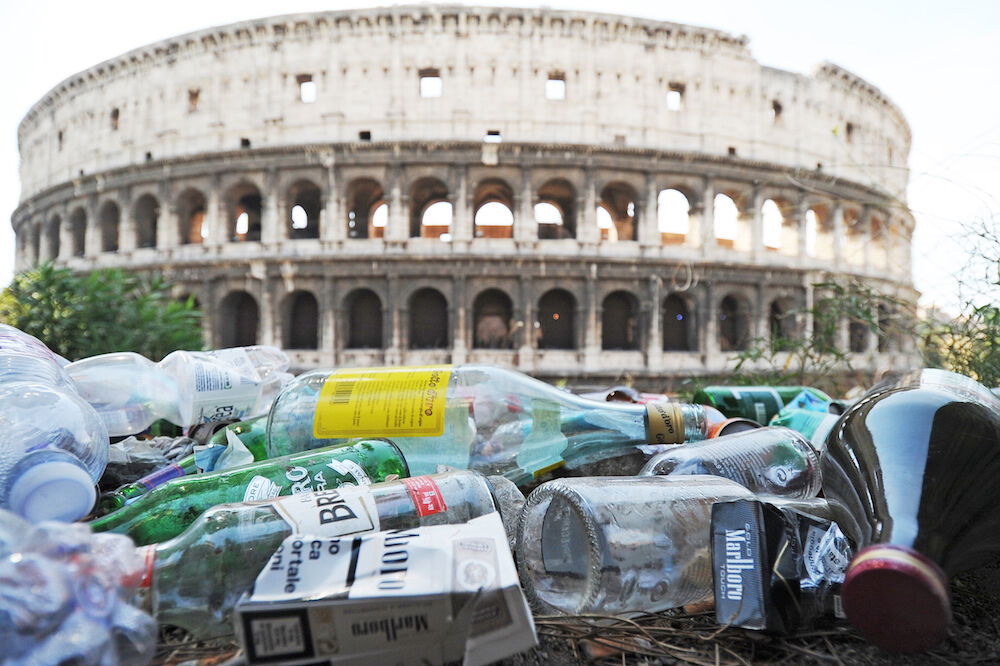PICTURE this.
Garbage strewn in a public area — a tourist site. Empty beer bottles, cigarette butts and discarded food wrappers. Volunteers will clean up the godawful mess, knowing that the place will be trashed again within days.
No, not Saipan — or Guam. We’re talking about a more famous tourist destination, over 7,000 miles away: Rome, the “eternal city” which has a population of 2.8 million. Around nine million international tourists visit Rome each year.
The Italian capital is “world-famous for the beauty of its Renaissance buildings, fountains and piazzas,” The Wall Street Journal reported recently. Completing the landscape: litter and uncollected garbage.
“Drinkers leave beer cans and wine bottles on the steps of the Eternal City’s baroque churches and ornate palazzi. Piles of trash bags litter the picturesque Trastevere neighborhood and sometimes reach the luxury boutiques on upscale Via dei Condotti.
“Stout seagulls peck open trash bags and gorge on tossed leftovers. Their favorite dining spots include refuse-laden streets near the river Tiber, such as the cobbled lane to the Villa Farnesina, an architectural jewel decorated with frescoes by Raphael. Portly rats sometimes join the party.
“And that is in the city’s historic center, which local authorities try to keep presentable for tourists. Rome’s suburbs are worse. Nobody likes it, but residents split over where to place blame.”
According to the Journal, local NIMBYism — Not In My Backyard — has left Rome and its surrounding region without enough dumps, landfills or garbage processing plants.
“The [city government’s] inefficient, understaffed collecting and cleaning services don’t help matters.
“Many Romans don’t see the point of showing strong public spirit while suffering with weak public services. People leave bags of garbage everywhere but in trash containers. One common view is that it is City Hall’s job to keep Rome clean, not the Romans.’
“ ‘It doesn’t make any sense to lean on people’s civic sense when a service we pay for is provided only theoretically,’ said Salvatore Ramunno, a 57-year-old warehouse worker.
“Other locals say their litterbug compatriots should stop dumping old furniture and washing machines on the streets and maybe try putting garbage bags in city trash containers instead of in piles next to them.
“A woman tossed the plastic wrapping of her cigarette pack to the pavement on a recent day in a south Roman neighborhood famous for its pompous marble architecture from the fascist era.
“Karim Homarah, a 51-year-old resident, asked her to pick it up. A garbage can was about a yard away, he said.
“She called him a ‘rompipalle,’ a saltier Italian version of pain in the rear and walked off, Mr. Homarah said. He picked up the wrapper and put it in the can. ‘The indifference and passivity of the average Roman infuriate me,’ he said.”
Compared to Rome, of course, Saipan’s littering problem is small-scale and manageable. But it annoys a lot of us because litter mars the overall cleanliness of the island.
Luigia Campagna, an Italian activist interviewed by the Journal, said: “A clean environment would prompt more citizens to behave virtuously. But if we are surrounded by an open-air dump, what can we expect?”
Exactly.
On Saipan — and Guam — private sector and government volunteers, young and old, including tourists, conduct cleanups at beaches and other tourist sites all year round. They appreciate the island’s cleanliness and they want to keep it that way.
In Rome, the Journal reported, a group of American exchange students were picking up litter once when a man accused them of “stealing work” from municipal garbage collectors.
On Saipan, the central government cannot enforce the anti-littering law — among many other laws — but some believe it should now be in charge of collecting all the garbage on island.
Good luck.
To all of us.
Send feedback to editor@mvariety.com

When in Rome…











